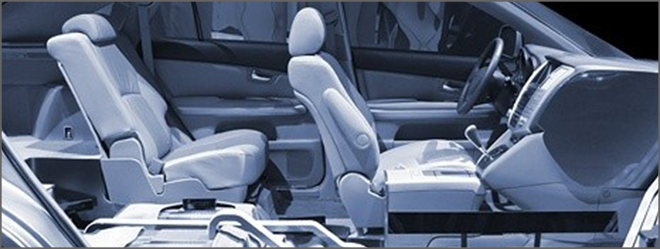High-Speed Video for Automotive Seating Development
Seats were simple, bench-like affairs that offered modest support and poor positioning. As the push for greater automotive occupant safety took form in the 1960’s, the importance of seating in the overall safety equation became clearer. Suddenly, seating began a technical journey to today’s highly engineered products that work in conjunction with the many other safety systems on a modern vehicle. Seating has played an important role in the dramatic 80% drop in U.S. highway deaths in the last 50 years.
Automotive Seat Crash Testing of seats for crash resistance starts with laboratory testing on what is called a crash sled. Both deceleration and acceleration types are used to simulate the deceleration forces of a crash. Very controlled, predictable and repeatable testing is possible with these seating test methods.
In addition to many sensors mounted on crash dummies during such tests, high-speed image sensors and video cameras are used to capture the sequential series of images for detailed post-test analysis. Most digital video is taken at 1000 frames per second (fps), but image sensors with much higher speeds (3000 and 5000 fps) are required for rapid events in automotive imaging such as airbag deployment to detect the subtleties.
Forza Silicon designs and manufactures custom high-resolution CMOS image sensors for high-speed video camera manufacturers in automotive imaging. These CMOS image sensors feature very high-speed electronic global shutters, some with exposure times as short as 1 µs.
In addition, Forza created a high-speed crash test camera with high-definition capability used in automotive imaging. Frames rates of 5000 fps make it an ideal choice for airbag testing.

Automotive Seat Crash Testing of seats for crash resistance starts with laboratory testing on what is called a crash sled. Both deceleration and acceleration types are used to simulate the deceleration forces of a crash. Very controlled, predictable and repeatable testing is possible with these seating test methods.
In addition to many sensors mounted on crash dummies during such tests, high-speed image sensors and video cameras are used to capture the sequential series of images for detailed post-test analysis. Most digital video is taken at 1000 frames per second (fps), but image sensors with much higher speeds (3000 and 5000 fps) are required for rapid events in automotive imaging such as airbag deployment to detect the subtleties.
Forza Silicon designs and manufactures custom high-resolution CMOS image sensors for high-speed video camera manufacturers in automotive imaging. These CMOS image sensors feature very high-speed electronic global shutters, some with exposure times as short as 1 µs.
In addition, Forza created a high-speed crash test camera with high-definition capability used in automotive imaging. Frames rates of 5000 fps make it an ideal choice for airbag testing.

